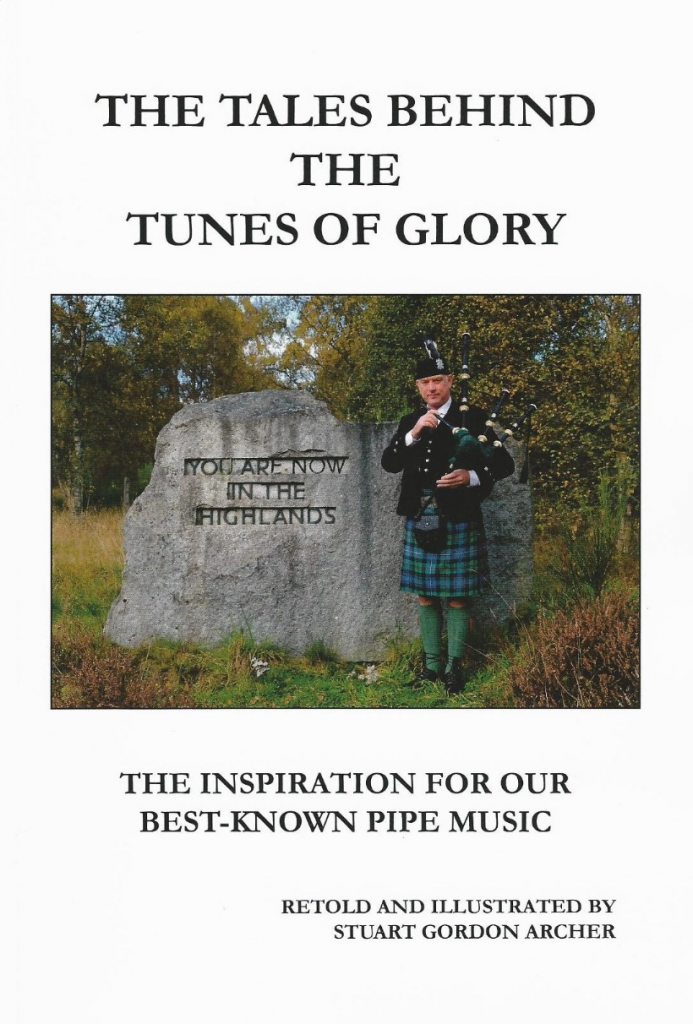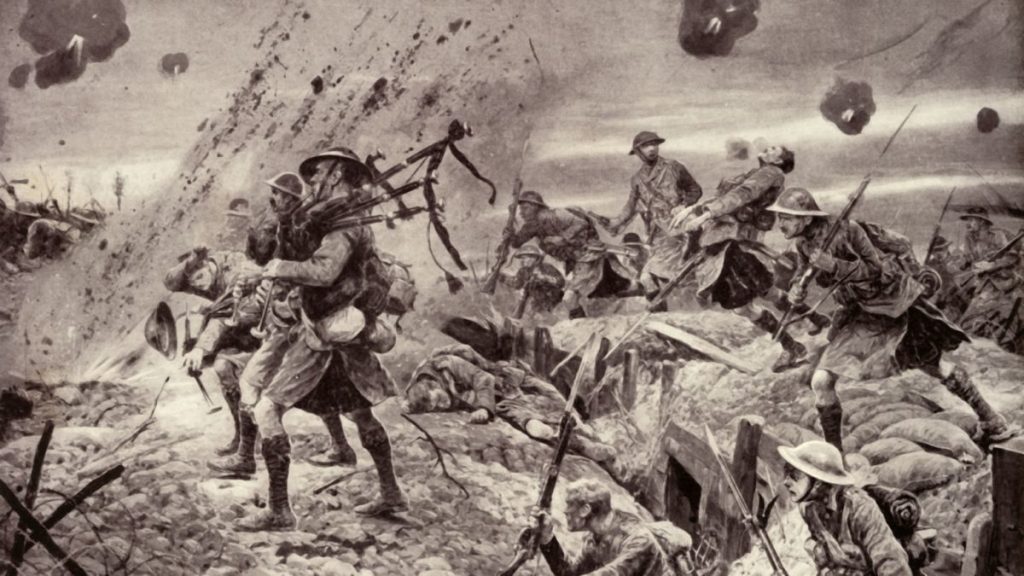The Tales Behind the Tunes of Glory

Ever wonder, what the is history behind some of our classic bagpipe tunes? The tunes we use in our Piper's Dojo Tutor? Or, the Weekly Mission tunes were work on from week to week at DojoU?
Review written by John Holcombe

In his new book, The Tales Behind the Tunes of Glory, author Stuart Gordon Archer eloquently explores the history of some of the best known tunes for the bagpipes. Not only does Archer place the tunes on an historic timeline, he illustrates beautiful drawings to support his stories.
Although the author includes on thirty tunes, he handles each in a well thought out manner. He readily acknowledges the differences between facts and myths. For example, Cabar Feidh (Gaelic for the deer’s antlers) Archer goes into detail about how an attacking stag threatened the life of King Alexander III of Scotland, but an Irishman named Colin Fitzgerald stabbed the deer with a spear, thus saving the King’s life. The King rewarded Colin with land near Eilean Donan castle, not only for saving his life, but also for his help in defeating King Haakon of Norway in 1263, the last Viking battle on Scottish soil. Archer goes on to explain how the stag’s head crest came to be the Clan MacKenzie’s coat of arms.
The Great Highland Bagpipe represents many facets of Scottish culture. Perhaps the bagpipe is best known for its role in commemorating military battles, both long ago and more recently into the modern era.

It is quite clear that Mr. Archer has done a tremendous amount of research into each tune in this book. In interesting prose throughout, the author takes the reader back in history as he provides as much detail as possible in his stories.
This is not a book of music scores, nor complete lyrics. But the author uses his own beautiful illustrations throughout the work to draw the reader into the stories. For example, Archer shows a few lines of Burn’s famous tune, Scots Wha Hae, and then illustrates only the first bar of that tune’s music.
Pipers world-wide, in this reviewer’s opinion, tend to value their instrument’s place in history and culture. And part of that history has to do with the variety of tunes we play, from a century’s old piobaireachd to all the different idioms of light music. Every composition has a story behind it.
The Tales Behind the Tunes of Glory is a short, but valuable and enjoyable, reference for many of the most important tunes we play.
If you are interested in learning more or purchasing a copy of Stuart Gordon Archer's book please head to:
https://www.deesidebooks.com/product/13394/The-Tales-Behind-the-Tunes-of-Glory-Archer-Stuart





Dr. Peter Heineman of the Omaha Pipes and Drums has made a similar effort called "Behind the Tunes" that is now up to five volumes. It's all downloadable at no cost from his webpage at http://plheineman.net/bagpiping.htm. Pete has posted several other resources such as an extensive Tutor manual for students, and one for instructors as well, a collection of Christmas Carols setting for the GHB, and very interesting notes from his travels in Scotland.
Thanks for the addition Malcolm! I had no idea about this excellent resource. Cheers, Carl
I’ll check out Walter Douglas, Andrew. Thanks!